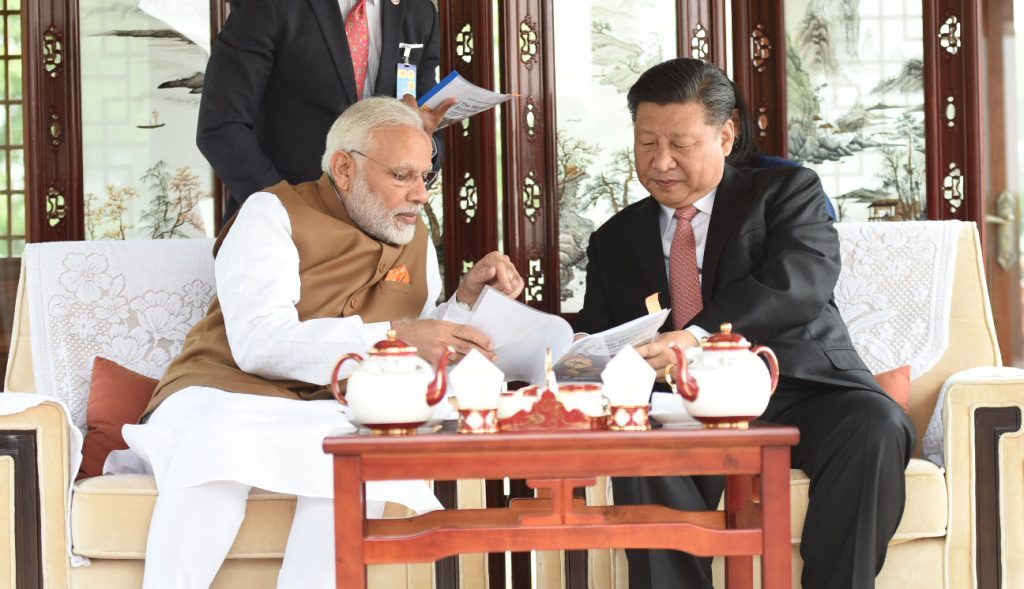
By Liu Tao and Qin Weina (Global Times, 3 March 2019) – India’s first semi high-speed rail, the Vande Bharat, has become the focus of attention over the past few days, as various “accidents” reported by the Indian media have once again triggered discussion and even mockery of India’s manufacturing initiatives. Some people seem to be ballyhooing the idea of a “dragon-elephant rivalry” by claiming that “Made in India” labels will replace those that say “Made in China,” which is not consistent with the actual situation.
In September 2014, Indian Prime Minister Narendra Modi launched the ambitious “Make in India” initiative, aimed at turning the country into a global manufacturing hub and raising manufacturing’s proportion of the GDP to 25 percent within 10 years.
Based on the experience of countries that have undergone economic transition, a mature manufacturing sector is the key to maintaining high economic growth. The 2008 global financial crisis and the subsequent anti-globalization sentiments further highlighted the importance of manufacturing in economic development. However, India’s manufacturing sector generally accounts for 15 to 17 percent of GDP, far below the 25 to 40 percent shares reported by developed countries and other emerging economies.
The reason is mainly that India has chosen a different industrialization path from the West and China, focusing on its technology-intensive, service-oriented industrial model. As the country gave priority to the development of a technology-intensive sector, its IT and software services have reached an advanced level globally, earning it the nickname “the world’s back-office.”
Yet, as the Indian economy has developed, its imbalanced industrial structure and high unemployment rate have become increasingly serious, as the services industry is limited in creating jobs. Despite the rapid development and high output value, the software, financial, telecommunications and other services industries contribute very little to employment, while traditional services such as wholesale, retail and transportation may create a large number of jobs, but contribute little to GDP. Therefore, to make use of its demographic dividend, adjust industrial structure and increase jobs, the Modi government has decided to promote the “Make in India” initiative.
While the “Make in India” initiative has indeed achieved certain progress over the years, there is still a gap between the policy’s effectiveness and the original intention of the Modi government.
Some Chinese have mocked “Made in India,” while others believe Indian manufacturing could pose a threat to China’s manufacturing sector. In our opinion, “Made in India” is now facing a similar situation as “Made in China” in some respects, which is why we should take an objective view toward it.
First of all, the export volume of China’s manufacturing sector has been ranked first in the world for years, while exports of India’s manufacturing are still far behind China, despite its rising trend.
Second, China has been moving up the global value chain to shift from input- and market-driven industrialization to a technology-driven model. With the diminishing advantage of labor-intensive manufacturing in China, it is essential for its manufacturing sector to transform. Meanwhile, India’s industrialization path is just the opposite of China, shifting from a technology-driven model to a market- and input-driven one to create more jobs and give play to its demographic dividend. The difference between China’s and India’s manufacturing development stages indicates room for cooperation for the two countries in matching their manufacturing strategies. By using India’s labor cost advantage and China’s capital and technology advantages, both sides can jointly improve their manufacturing levels to achieve mutual benefit and common development.
Third, industrial competition is weak, while there are many complementarities between manufacturing industries in China and India. They mainly compete in industries like food processing and manufacturing, beverages, textiles and other primary products, oil processing, coking, and nonferrous metal, while they are complementary in medical equipment manufacturing, transportation equipment manufacturing, special equipment manufacturing and other capital- and technology-intensive industries. In terms of trade, China has maintained a relatively high surplus against India. But if the two countries can adjust their trade structure based on their own advantages and disadvantages, bilateral trade may see greater improvement, releasing their trade potential accordingly.
In this sense, we are not against the idea of the smooth development of the “Make in India” initiative, which could help form a large regional manufacturing cluster to cover East Asia, Southeast Asia and South Asia. Its success will not only be conducive to the development of China-India relations and facilitate the building of the “Asian Century,” but will also help enhance the global industrial chain and push forward progress in globalization.
Li Tao is executive director of the Institute of South Asian Studies at Sichuan University. Qin Weina is a PhD student at the Center for Security and Development of Western Frontier China of Sichuan University. [email protected]


